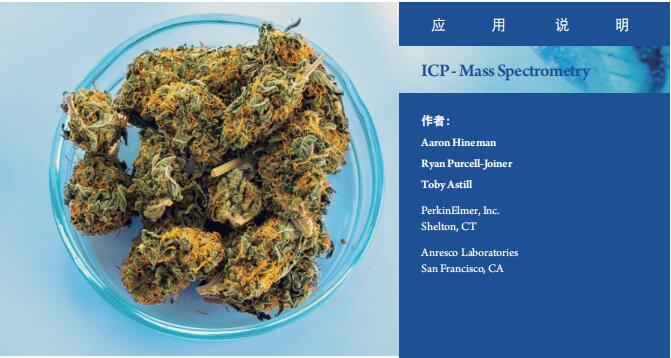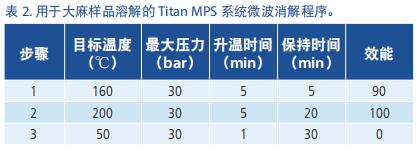

Introduction
Due to heavy metal toxicity, determination of cannabis and other cannabis derivatives and more important, so that the use of marijuana has become increasingly popular at the same time ensure the safety of patients and consumers in North America. This urgency continues to translate into a need to determine toxic elements in cannabis and other cannabis derivatives such as heavy metal cadmium ( Cd ), lead ( Pb ), arsenic ( As ) and mercury ( Hg ). Similar to the US Federal Drug and nutritional supplements prescribed 1-5, 6 California, Oregon and Colorado and other states issued a correction of marijuana limit of heavy metals.
The state's maximum allowable heavy metal content for cannabis and related products has been published in all states where marijuana has been legalized. Many of these limits are based on USP <232>/ICH Q3D recommendations. The limits will vary depending on the route of administration, which is similar to the provisions in the ICH Q3D recommendations. Currently, Canada has not yet enacted regulations on metals in cannabis products, but USP <232> and <233> are used as reference guides. Some of the currently known heavy metal limits are listed in Table 1 . The California “all medicinal cannabis product” limit was adopted in this study because it is the most rigorous and most suitable for cannabis flower.

The challenges of elemental analysis in cannabis are increasing. The main considerations are the required sample preparation and digestion. In view of the diverse types of cannabis samples (flowers, concentrates, foods, extracts, tinctures, waxes and oils), must adopt efficient sample preparation protocol. Sample preparation is usually evenly distributed through the first and then microwave digestion, to decompose complex matrix and extracts heavy metals. Accordingly, the present research and development programs using specific sample preparation, microwave digestion conditions and ICP-MS analysis method, to provide samples for all kinds of cannabis robust methods.
ICP-MS is a very effective trace metal analysis technique. Since this method can be detected in complex matrices to lower concentrations of the elements, so as for the determination of trace metals cannabis samples, especially for certain concentration of the sub-ppb level metals is an ideal tool for detection. Through the data show, it is possible according to USP General Chapter <233> listed authentication scheme using Titan MPS ™ microwave digestion system and the heavy metals cannabis NexION® ICP-MS measurement in.
experiment
Sample preparation program
In the work described herein, all samples are used with a standard 75 mL PTFE (polytetrafluoroethylene) digestion tank Titan MPS ™ (PerkinElmer Inc., Shelton , Connecticut, USA) a sample preparation system for microwave digestions.
Smash approximately 3-5 g of the cannabis flower sample and mix well. In accordance with the regulatory requirements of the State of California "lab should be analyzed at least 0.5 g hemp or hemp representative samples of products, to determine the presence or absence of heavy metals", each sample was weighed 0.50 ± 0.05 g, transferred to digestion vessel, was added 7 mL of nitric acid ( 70% , v/v ) and 3 mL of hydrogen peroxide ( 30% , v/v ). The can was opened for 10 minutes to ensure safe pre-reaction; then capped and digested according to the procedure in Table 2 . To assess the effect of sample preparation on analyte recovery, the microcaps were spiked prior to reagent addition. To maintain mercury stability, 200 ppb gold ( Au ) was added to each sample .
After digestion, all samples were diluted to 50 mL with deionized water . Thus the total dilution factor is 100 times and the reagent matrix is 14% HNO 3 . Calibration standards were prepared from the same matrix. Figure 1 shows the cannabis flower and the supernatant obtained after digestion and analysis.


For details, click the button below to request information.










